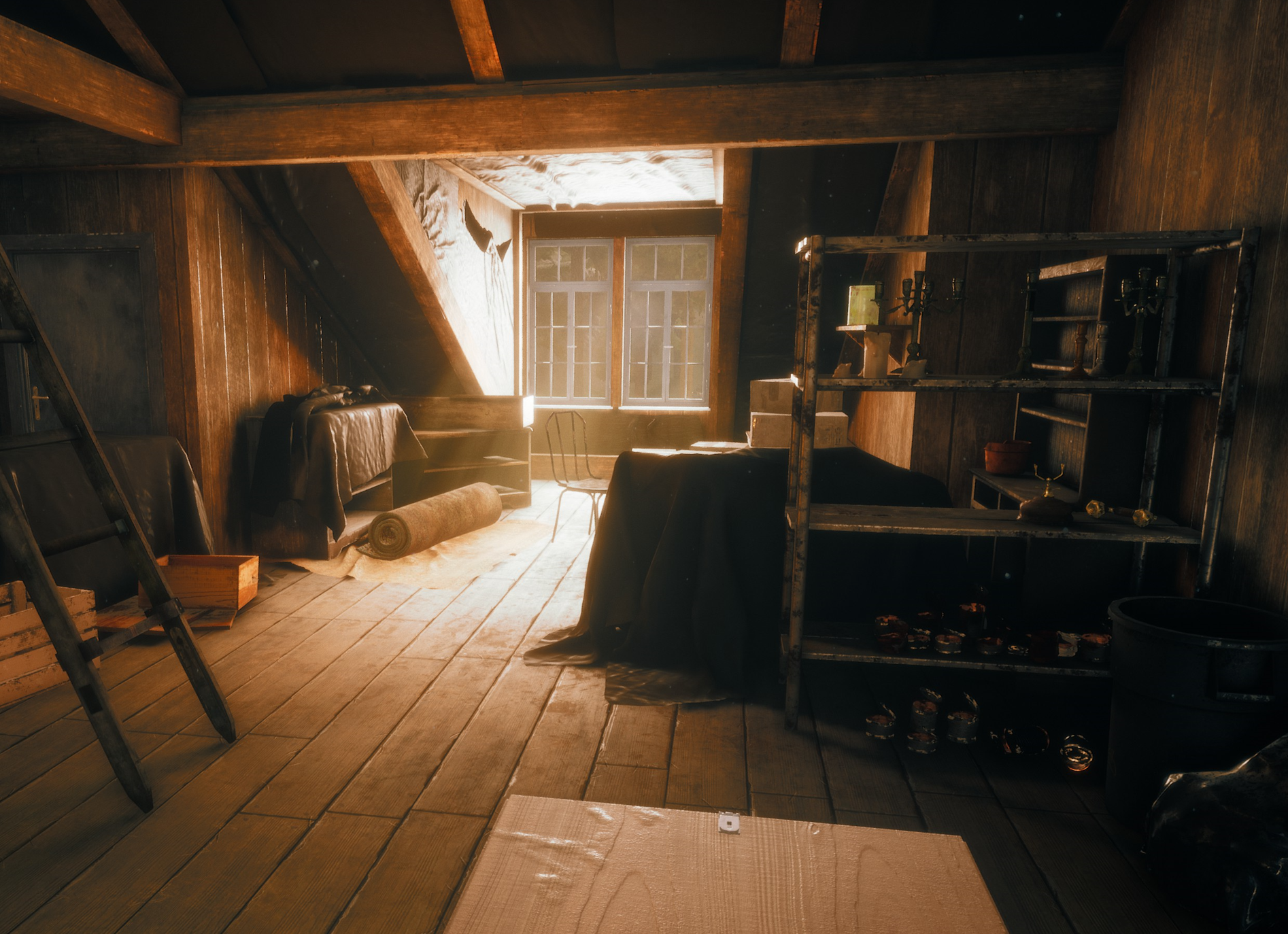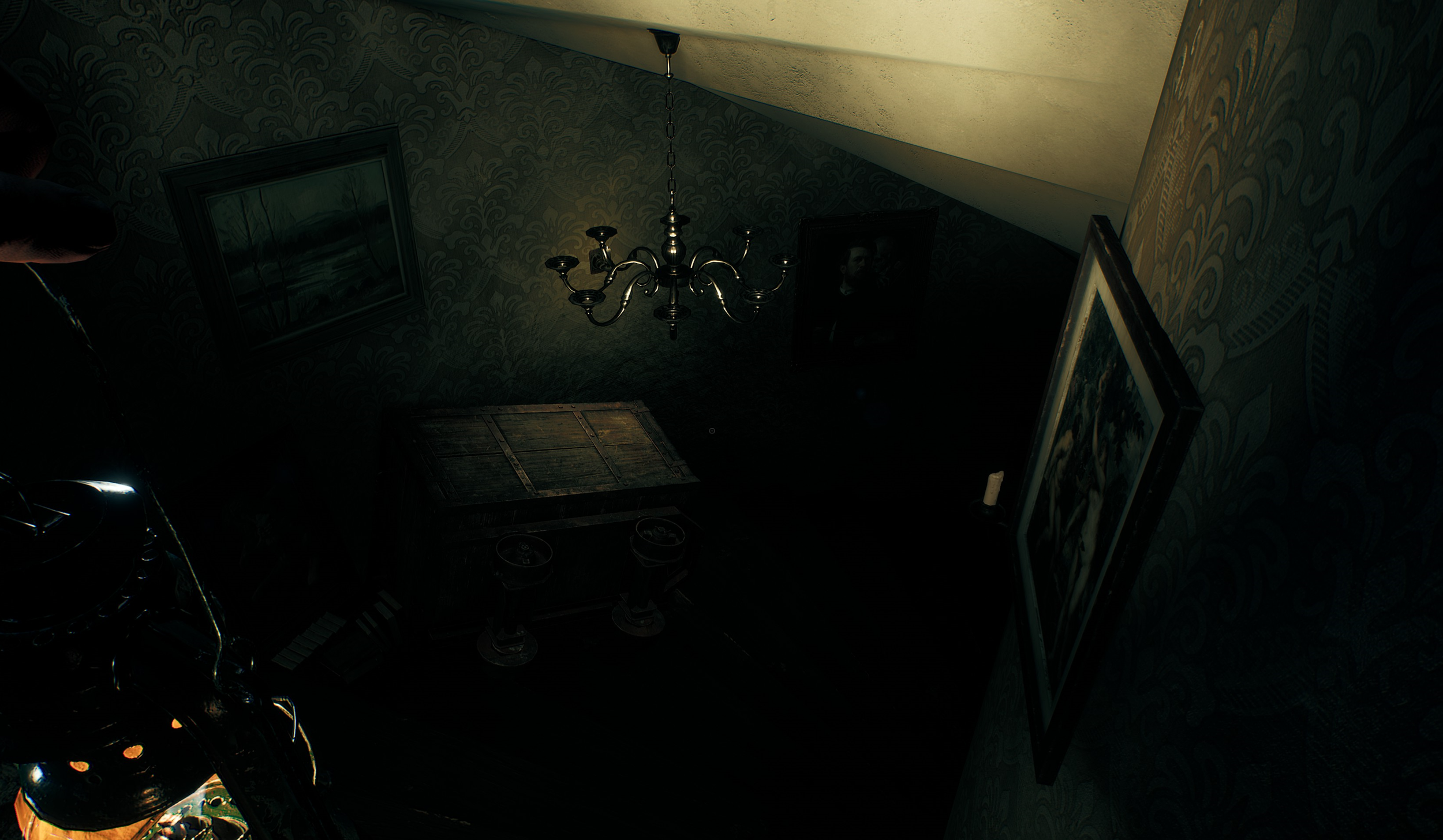Game Review: The Beast Inside
Illusion Ray Studios
There’s a dead man in the upstairs hallway. The chasms where his eyes should be are as dark as every other place in the old house that the light of my burning match doesn't touch. Due to the shape of the staircase, I have to turn my back to him in order to ascend. I just came from a lightless basement where blood covered the floor and far more threatening ghosts shrieked at me from every corner as I pushed through an early stretch of The Beast Inside.
But I hesitate. Something primordial in my adrenaline-bathed brain recognizes that an antagonist who waits, who regards my character without attacking, might be far more sinister than the ghosts I had encountered thus far. I stand on the stairs, watching him watch me, and my match burns out, reminding me that I cannot hold this position indefinitely. I have four left and then it will be only the moonlight which streams through the windows of the aged country house to guide me. I turn my back. I ascend the stairs.
The Beast Inside is a story-driven singleplayer horror game from Illusion Ray that was released in 2019. The game is divided into chapters, alternating between the twin narratives of Adam Stevenson, a CIA codebreaker and cryptanalyst who occupies the aforementioned country house in 1979, and Nicolas Hyde, the prodigal son of a wealthy businessman who returned to the home in the dead of night in 1864. As the player progresses, they will find how the stories of Adam and Nickolas intertwine, and direct the fates of both.
I’ve played a lot of horror games, and The Beast Inside does a far better job than most in making you feel immersed in the unfolding terror. The graphics and sound design are exceptional for an indie title, and while the level design feels decidedly gamey, this is one you can really sink into if you don’t let the visibility of a few seams spoil the experience.
From a storytelling perspective, The Beast Inside is a masterclass in pacing, alternating between harrowing sequences where you creep and flee through ghost-infested 19th century setpieces and slower, subtler stretches where Adam wrestles with the inescapable paranoia of being a CIA agent in a remote location. Are the instances which trouble Adam supernatural in nature, or are the Russians actually closing in on him? It creates a wonderful shift in mood that keeps everything fresh and enticing, always pivoting before the particular tension of a chapter can go stale. More designers need to understand the importance of well-crafted pacing in horror titles.
In many instances, I felt genuine fear at the thought of approaching the next darkened hallway, underground cave, or moonlit stretch of wilderness. I found it refreshing that there were no sanity mechanics, just legitimately scary scenarios where you were asked to rely on your own will to push forward. This isn’t a game that recycles its scares too often, throwing new challenges and dreads at the player in each new chapter, even if the terror itself occasionally misses the mark. While it plays very much like a walking simulator at points, I never grew tired of what was before me, and pendulumed pretty steadily between deep engagement and good-natured acceptance. The Beast Inside also features some of the best sound design I have encountered in a horror game, with every creak and echo that the old house releases feels thick with purpose.
But it also does a few strange things, foremost being a Goldilocks approach to gameplay. The game tests wide array of mechanics for brief periods before abandoning them for good; if you had told me in my first hour of play that I would be shooting at specters with a reloadable revolver and glancing at an oxygen meter as I swam through a flooded channel, I would have insisted you were confused. I can’t say one way or another if this erraticism is intended or if the title was simply once much more ambitious, but the end result is that Beast tries on different shoes throughout its course, and apart from feeling janky from time to time, these never become something to celebrate or bemoan.
Potential players should also note that there are some puzzles that go well above those found in a typical horror game, often asking the player to juggle multiple resources and test different modes of logic to find a solution. I personally enjoyed this, but feel it will send many players rushing for the search bar as they stare at the ciphers and coding manuals which litter Adam’s desk. It’s an interesting touch, but perhaps out-of-step with the core game. I feel any time you tempt a player to tab out of the game to use a browser, you’re diminishing the experience. That said, those who enjoy puzzles and horror in equal measure will probably feel as though they’ve found a hidden treasure.
Regardless of how you shake out on the puzzles, some sections of The Beast Inside feel a little sparse, a little video-gamey. At one point I was following three differing power lines to turn off an electric fence. There were no surprises, no developments, I just literally followed three cords and flicked a switch at the end of each. It felt like a missed opportunity in a game that typically capitalizes on these set pieces. There are also portions where the game feels too empty, with many branching paths in locations but rarely much to find.
I’m not sure if it’s my current mood or simply some trickery of game design, but I found myself uncharacteristically charitable when it came to the incongruencies of The Beast Inside. Every time a murderous ghost spawned a little too close to the save location or I was presented with a series of wooden platforms that had no business lining the side of a cliff I needed to scale, I was able to shrug it off and refocus on what I enjoyed about the game. I’m going to give the developers credit for that, as there was always something to enjoy, and this is far superior to making something that is perfectly polished. When a game does things so well that it engenders goodwill in players, we should make note of it.
At the time of writing, The Beast Inside is a few years old and doesn’t seem to have made much of a critical or popular splash. The developer seems to have a small but dedicated fanbase in which I now find myself, and would encourage you to join. So long as you set your expectations to the appropriate indie level, The Beast Inside will hit far more than it misses.
Verdict: 7.6/10 (it earned an extra point for having a satisfying final chapter)
Strengths
Excellent story, sound, and world design
Masterclass in pacing, thanks in part to the dual narrative
Memorable story
Weaknesses
Level design lags behind other attributes
As good as it is, feels it could have reached another level of quality with a bit more development
Puzzles may ask more than the average players wants to give
You may also like: Blair Witch, Amnesia: a Machine for Pigs, Apsulov: End of Gods






